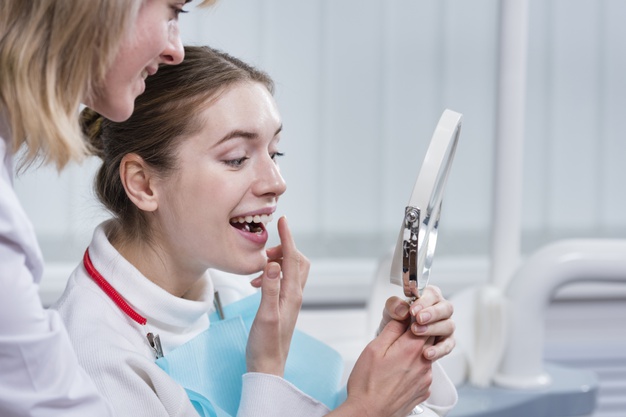
A sinus lift can make implant procedures possible. It allows patients with bone loss in their upper jaw to enjoy the benefits from a long-term solution to their missing or failing teeth using dental implants.
A sinus lift is a surgical procedure that grafts bone to the upper jaw at the position of your molar and premolar teeth. The sinus membrane is gently separated and moved upward, or “lifted”. Bone is then added, in most cases the dental implant can be placed at the same time resulting in an increase in bone volume that anchors the implant.
After the procedure, you may have some swelling in the area. You may bleed from your mouth or nose. Please do not blow your nose or sneeze forcefully. Either one could cause the bone-graft material to move and loosen the stitches.
Your dentist may advise you to use saline sprays to keep the inner lining of your nose wet and prescribe medicine to prevent congestion and inflammation. You may also be given a prescription for pain medicine, an antibiotic and an antimicrobial mouthwash to help prevent infection. Most patients have only a little discomfort after a sinus-lift procedure.
You will see the dentist after 7 to 14 days when an evaluation of the surgical site will be undertaken and have sutures removed if they do not dissolve on their own. You might be asked to return a few more times to ensure the area is healing properly.
After a sinus lift, you need to wait several months for the bony material to harden and integrate with your jaw. Depending on the grafting material used, implants may be placed in four to nine months.
Some patients have thin sinus membranes or bumpy sinus floors making the release of the membrane more likely to cause a delay in treatment. The main risk of a sinus lift is that the sinus membrane could tear or develop a hole. If the membrane is torn during the procedure, the dentist will either suture the tear or place a membrane over it. If the repair is not successful, your dentist may stop the procedure and give the hole time to heal.
Your dentist can redo the sinus lift once the membrane has healed. This usually takes a few months. A healed membrane tends to be thicker and stronger, which means a second attempt at a sinus lift is likely to be successful. However, other factors also affect success.
Infection is a risk of any surgical procedure. However, this rarely occurs after sinus lifts. On rare occasions, the existing bone does not integrate with the bony graft material, and the grafted area does not develop a blood supply. If this happens, any implants placed in this area will fail because there is no live bone for them to attach to. If this happens, you can have the sinus lift procedure repeated.
Please contact our Dental Office in St. John's at reception@epicdental.ca or call us at 1-709-754-4895 if you have any concerns or questions about this procedure.